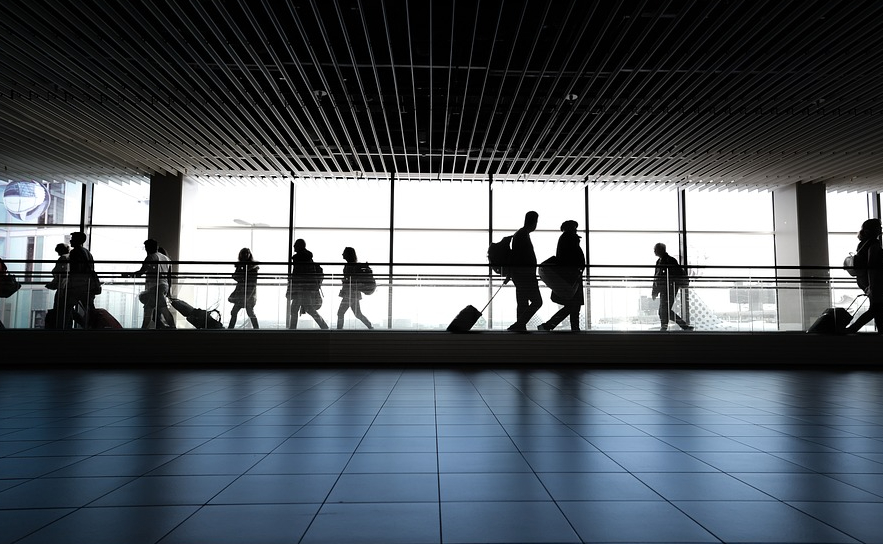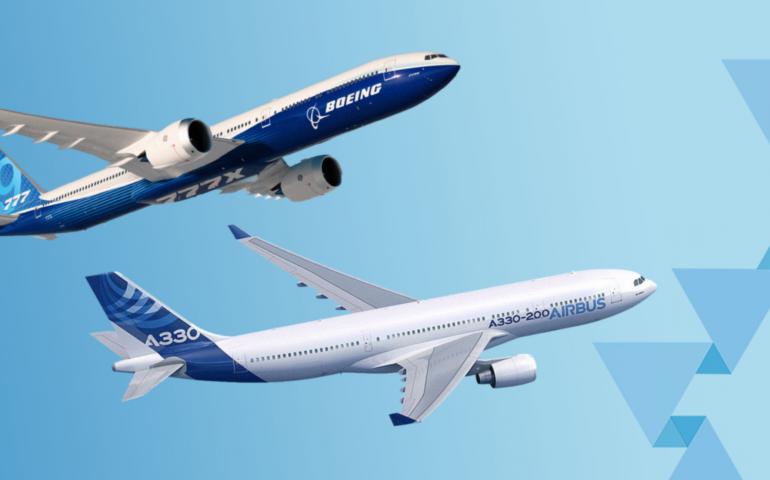
Airports require an approach focused on the customer experience, because in this way, it is almost assured that people regain confidence in air transport and travel, knowing that they are doing so safely and securely. Widespread vaccinations are, of course, a big contributor to the return of traffic.
Stephen Freibrun is a Principal with ICF and the Americas Airports Sector Lead at ICF*, a global strategic consulting firm. Stephen is an expert airport business strategy advisor with more than three decades of real estate and management experience in the public and private sectors. Since 1993 he has worked with airlines, airports, and airport investors on commercial projects, facilities planning, non-aeronautical revenue forecasting, and property management.
In this exclusive interview with A21, Stephen talks about some of the strategies that airports can carry out to start recovering from the economic effects caused by the covid-19 health crisis.
- What is the main challenge for airports today?
The biggest challenge that airports face is working towards the recovery of traffic, and one of the things that goes along with that is consumer confidence. Having a communications plan that instills confidence in the consumer that it is safe to travel again is imperative, and that message must come from two places, not only the airlines but also the airports. Passengers want to understand that it is safe to travel throughout their entire travel ribbon - from the time they decide to leave their homes to the time they get to their destination. It is more than just curb to gate; it is home to hotel.
Once consumer confidence is reinvigorated and the pandemic is behind us, traffic recovery will accelerate. Until then, a diminution of traffic will continue to cause financial strains for airports. This is one of the biggest worries in certain parts of the world, and what comes with that is getting the doors open again for international travel and tackling the issue of business passenger recovery. We all know that leisure travelers are coming back to a significant degree while business travel recovery is slower because businesses have found virtual approaches to master communications.
- Business travelers are down at the moment, and a big part of the revenue from the airport industry came from business travel. So, with that in mind, what can an airport do to diversify their business and revenues?
It's quite challenging and may require new ideas on how to increase revenue without relying on passenger traffic. There are many examples where airports have embraced this idea. Port of Spain Piarco International Airport in Trinidad have hundreds of acres of land that they are developing. Piarco has closed its borders to all international flights but they’re looking to redevelop their land and are also working on developing a village of food trucks outside the terminal that will attract local citizens for entertainment purposes until the airport opens. (Space permitting, there is no reason why this could not continue once the airport is open.) A new model can be seen at Edmonton International Airport (EIA), where the airport employs a strategy to grow non-aeronautical revenues through revenue diversification. The airport offers conventional development opportunities on its leased lands (a hotel, golf course and premium outlet mall), but its strategy extends beyond that as well. It actively enters into partnerships with emerging businesses and provides growth support through its incubation and acceleration consortium – the Alberta Aerospace and Technology Centre (AATC).
- Last week the director of ACI, Luis Felipe de Oliveira, told us that one of the most important sources of income came from the non-aeronautical side, such as food, retail, duty free, etc., but how can airports bring back that income since there is limiting flying with the travel restrictions?
Non aeronautical revenue represents about 40% of the airport revenues, according to ACI world. That covers retail, duty free, car parking, etc. going to be a challenge to grow significantly in the near term. The reason I say that is that the impact on retail as a result of the growth of e-commerce, prior to and during covid, will impact retail and duty-free sales. Airports need to quickly catch up and focus on the digital experience and establish digital marketplaces so that products could be purchased when, how and where passengers want it. Digital marketplaces also allow purchases to be made in advance, even before arriving at the airport. Aeropuertos de Argentina have established small non-restaurant associated seating areas in the airports where people can be physically distant from others. At those sitting areas, there are QR codes that can be scanned for delivery of meals. This approach expands the commerce beyond the walls of the restaurants. Airports need to embrace the new commercial digital world; there are new technologies that create ways to sell food, beverage and retail virtually without the use of actual physical stores. Add delivery options for passengers within or outside the airport and suddenly an airport has created an entirely new commercial ecosystem.
- That can work for the bigger hubs, like in Mexico City or New York, but what about regional airports that don't have that amount of traffic?
A small airport in South America is different than a small airport in the US, in part because of the advancement of technologies in the US. To me, the focus can be on really truly understanding who airport passengers are, how they behave and what resonates with them as individuals, as consumers and as passengers. This is called passenger profiling. With solid information about the passenger makeup (not just simply business versus leisure, but instead emerging market explorers versus intrepid elderly passengers, for example), small airports can target products to their audiences and develop programs that are representative of the region. Airports still must question concessionaires if what they’re selling is what its passenger base desires most. If airport leadership knows who is at their airport, concept and product mix can be modified for continual improvement.
- Is this the right moment for airports to invest in their infrastructure or anything related?
Investment in infrastructure depends upon the finances of an airport. Because industry experts like ICF expect traffic to turn around in the next couple of years, airports need to ensure that their facilities can meet that demand and to study whether or not their facilities can accommodate the expected growth thereafter. The compound annual growth of traffic in Colombia from 2009-2019, as an example, was over 9%. If that growth rate continues in the middle of the 2020s those airports will need to ensure that their terminals can address this passenger demand. The year 2020 gave them a reprieve, but soon enough they may have issues with demand again, accounting for crowding and peak periods. COVID has also forced airport planners and designers to focus on airport layouts that create flexibility for growth; flexibility to not only potentially downsize if another world pandemic occurs, but the flexibility to grow as well. Certain airport layouts like Denver International Airport, with parallel concourses, are conducive to being able to grow or contract. In summary, it can be the right time to consider infrastructure improvements if airport demand warrants it.
- Talking about airport capacity, and constraints, before covid Latin America was of the regions that had the most issues. How do you see this situation in the region regarding airport capacity?
Brazil is currently beset by a severe second wave of contagion, which has forced a cutback, the other markets have lacked far behind although Colombia and Chile are reopening. Vaccinations will play a key part.
- Do you think the pandemic has pushed forward the implementation of touchless systems and that kind of technology?
I think Covid has highly accelerated the use of technology in airports and that the contactless experience will be quite prevalent in the future, from biometrics to digital passports. I think the industry is going to see a whole new process for becoming secure at an airport, as part of the seamless journey. I also believe, as would naturally occur after any big change, that passengers will need more time to go through security which will impact their availability of discretionary time to shop. From a commercial perspective, airports should be cognizant of security checkpoint speed of service to ensure that post-security dwell times are maximized for revenue generating purposes. We will also see a lot of integration between phones and contactless technologies.
Contactless self-service is important to promote a traveler’s emotional comfort, but when introducing these technologies, it will initially slow down the process of becoming travel ready. Once passengers become more familiar with the technologies and new processes, whether it is biometrics or other touchless technologies, getting travel ready will ultimately be faster than ever.
- Airlines do a great job talking to their customers, they explain to their customers how to use certain technologies and services. How can airports do the same thing for their customers?
Communications. Public communications strategies and campaigns will help instill confidence and emotional comfort. Airports need to take an omnichannel approach to convey that the airport is safe, that passengers do not need to be concerned about traveling, and that the airport is concerned about their wellness. A public communications strategy is critical to create a sense of calm and to provide information, because information is king. Thus, passengers will know what to expect, which will alleviate travel anxiety, and create a relaxed travel experience.
- About health passports. Do you think they are going to stay or is it only a trend?
Health passports may stay for a while. The importance of a health passport is that it boosts confidence for travelers, that, for example, they’re on a covid-free plane or in a covid-free airport. It gives them the assurance that the airport and airline are providing them with a safe and secure environment, and I think this will contribute to people returning to the skies faster. Personally, knowing that the person sitting to my left or right is fully vaccinated or has just presented a negative covid test 24 hours before getting on the plane, gives me confidence.
Health passports have a relationship to commercial programs. Tying this back to commerciality and the passenger experience, passengers won’t shop and dine if they’re stressed. If they are nervous about their own safety and health and are concerned about being with others in the airport, passengers will be less prone to browse retail or eat in a restaurant. I think health passports contribute to the emotional comfort required for passengers to return to flying, and ultimately shop and dine more.
- Do you have anything more to say about what we spoke today?
Customer experience: a customer centric approach that empathizes with the stress that passengers have while traveling is important for airports to embrace, making sure passengers are traveling with the knowledge that it’s a safe and secure activity.





Facebook comments